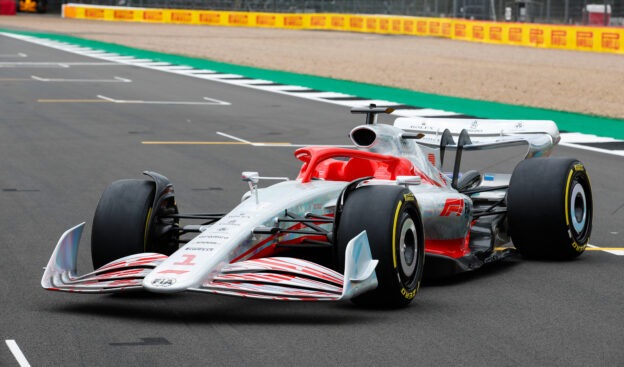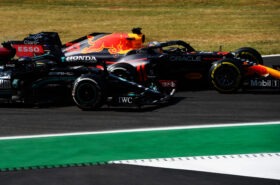F1 eyes smaller & lighter cars for next generation

Nov.2 - The all-new 2022 cars are yet to be fired up, but Formula 1 is already looking towards the next generation of cars that should make their bow in 2026.
Next year, the radically-different cars are tipped to be slightly slower but much easier to race and overtake with.
But in the past months, F1 has also been busily planning for 2026, when the engine rules will be tweaked to be greener, simpler and cheaper.
And the next step, according to FIA technical boss Pat Symonds, is for the 2026 cars to follow a similar prescription.
"Not only the engines but also the cars have to become more sustainable," he is quoted by Auto Motor und Sport.
"The only way to do this is to use the formula 'smaller, lighter, more efficient'."
Indeed, the 2022 cars will actually be even heavier than the already-cumbersome - albeit lightening quick - current field of Formula 1 racers.
So, for 2026, rumours suggest the cars will be smaller and lighter, with a shorter wheelbase and narrower chassis. And the brakes will be smaller thanks to greater reliance on aerodynamics and engine braking.
"Theoretically, the engine braking could take over everything," said Symonds, "but there are still moments when the driver has to brake without the battery being charged."
✅ Check out more posts with related topics:













YES! Smaller and ligheter like they lwys were.
NO electric notors, hybrid, etc. BS and associate weight.
Let the aeorgo free. No Min weight. v10s with turbos! Nitromethane if you think your motor can make it...
... and Grid Girls ... especially in Qatar.
Never understood why f1 cars got wider with every new generation, a big a reason drivers couldn't over take, to worried about front wings
You answered your question really. The cars got wider precisely because the wings needed to be wider to compensate for the heavier fuel load and batteries for the hybrid system. Remember those ugly and slower 2016 cars? Narrower with smaller tyres. As in too slow.
Thought I'd look it up as not sure about heavier fuel load in 2019 affecting wing. So, the bigger front wings were allowed "The increase in width was agreed to offset the loss in downforce from the removal of other parts of the wings."
The first widening in 2017 had to do with what I said. The mods in subsequent years seem more to do with reducing issues with dirty air when following other cars without much loss of downforce apparently.
I've seen a mention smaller, but not necessarily lighter.
An easy way of reducing overall weight would be a smaller fuel tank, & if necessary for this, shorten the races.
Reducing tank size would automatically shave off some weight w/o taking away any safety measures.
All races could have the lowest lap count needed for reaching 260 km a la Monaco (Singapore should have that anyway).
Races would still be long enough for proper racing & strategic options.
For example, Super Formula races are between Monaco GP & F2 feature races but still have enough laps for the above two.
305 km has been the standard for a while, but not a definite must.
A synthetic fuel produces more energy per kg than conventional petrol, based on Pat Symonds' words.
A shorter race distance is also possible with the present & upcoming fuel types earlier, though.
✅ Checkout the latest 50 F1 Fans comments.